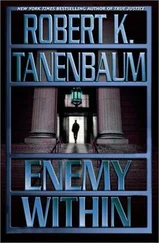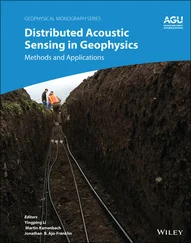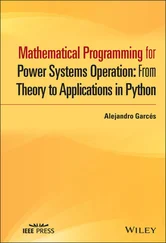The request also contains an authenticator, basically, a timestamped crypto-graphically strong checksum of the rest of the message, including the cell name, request, and other fields not shown in the figure. This scheme makes it impossible for an intruder to modify the message without detection, yet does not require the client to encrypt the entire message, which would be expensive for a long message. (In this case the message is not so long, but authenticators are used all the time, for simplicity.) The timestamp in the authenticator guards against an intruder capturing the message and playing in back later because the authentication server will process a request only if it is accompanied by a fresh authenticator.
In this example, we generate and use a new session key at each step. This much paranoia is not required, but the protocol allows it and doing so allows very short lifetimes for each key if the clocks are well synchronized.
Armed with a ticket for the privilege server, the client now asks for a PAC. Unlike a ticket, which contains only the user's login name (in ASCII), a PAC contains the user's identity (in binary as a UUID) plus a list of all the groups to which he belongs. These are important because resources (e.g., a certain printer) are often available to all the members of certain groups (e.g., the marketing department). A PAC is proof that the user named in it belongs to the groups listed in it.
The PAC obtained in step 3 is encrypted with the authentication server/ticket-granting server's secret key. The importance of this choice is that throughout the session, the client may need PACs for several application servers. To get a PAC for use with an application server, the client executes step 4. Here the PAC is sent to the ticket-granting server, which first decrypts it. Since the decryption works, the ticket-granting server is immediately convinced that the PAC is legitimate, and then it reencrypts it for the client's choice of server, in this case, S .
Note that the ticket-granting server does not have to understand the format of a PAC. All it is doing in step 4 is decrypting something encrypted with its own key and then reencrypting it with another key it gets from the registry. While it is at it, the ticket-granting server throws in a new session key, but this action is optional. If the client needs PACs for other servers later, it repeats step 4 with the original PAC as often as needed, specifying the desired server each time.
In step 5, the client sends the new PAC to the application server, which decrypts it, exposing key K 4used to encrypt the authenticator as well as the client's ID and groups. The server responds with the last key, known only to the client and server. Using this key, the client and server can now communicate securely.
This protocol is complicated, but the complexity is due to the fact that it has been designed to be resistant to a large variety of possible attacks (Bellovin and Merritt, 1991). It also has many features and options that we have not discussed. For example, it can be used to establish secure communication with a server in a distant cell, possibly transiting several potentially untrustworthy cells on every RPC, and can verify the server to the client to prevent spoofing (an intruder masquerading as a trusted server).
Once authenticated RPC has been established, it is up to the client and server to determine how much protection is desired. In some cases client authentication or mutual authentication is enough. In others, every packet is authenticated against tampering. Finally, when industrial-strength security is required, all traffic in both directions can be encrypted.
Every resource in DCE can be protected by an ACL, modeled after the one in the POSIX 1003.6 standard. The ACL tells who may access the resource and how. ACLs are managed by ACL managers, which are library procedures incorporated into every server. When a request comes in to the server that controls the ACL, it decrypts the client's PAC to see what his ID and groups are, and based on these, the ACL, and the operation desired, the ACL manager is called to make a decision about whether to grant or deny access. Up to 32 operations per resource are supported.
Most servers use a standard, but less mathematically inclined, ACL manager, however. This one divides the resources into two categories: simple resources, such as files and data base entries, and containers, such as directories and data base tables, that hold simple resources. It distinguishes between users who live in the cell and foreign users, and for each category further subdivides them as owner, group, and other. Thus it is possible to specify that the owner can do anything, the local members of the owner's group can do almost anything, unknown users from other cells can do nothing, and so on.
Seven standard rights are supported: read, write, execute, change-ACL, container-insert, container-delete, and test. The first three are as in UNIX. The change-ACL right grants permission to modify the ACL itself. The two container rights are useful to control who may add or delete files from a directory, for example. Finally, test allows a given value to be compared to the resource without disclosing the resource itself. For example, a password file entry might allow users to ask if a given password matched, but would not expose the password file entry itself. An example ACL is shown in Fig. 10-28.
Fig. 10-28.A sample ACL.
In this example, as in all ACLs, the ACL type is specified. This type effectively partitions ACLs into classes based on the type. The default cell is specified next. After that come permissions for two specific users in the default cell, two specific groups in the default cell, and a specification of what all the other users in that cell may do. Finally, the rights of users and groups in other cells can be specified. If a user who does not fit any of the listed categories attempts an access, it will be denied.
To add new users, delete users, or add, delete, or change permissions, an ACL editor program is supplied. To use this program on an access control list, the user must have permission to change the access control list, indicated by the code c in the example of Fig. 10-28.
10.7. DISTRIBUTED FILE SYSTEM
The last component of DCE that we will study is DFS (Distributed File System)(Kazar et al., 1990). It is a worldwide distributed file system that allows processes anywhere within a DCE system to access all files they are authorized to use, even if the processes and files are in distant cells.
DFS has two main parts: the local part and the wide-area part. The local part is a single-node file system called Episode, which is analogous to a standard UNIX file system on a stand-alone computer. One DCE configuration would have each machine running Episode instead of (or in addition to) the normal UNIX file system.
The wide-area part of DFS is the glue that puts all these individual file systems together to form a seamless wide-area file system spanning many cells. It is derived from the CMU AFS system, but has evolved considerably since then. For more information about AFS, see (Howard et al. 1988; Morris et al., 1986, and Satyanarayanan et al., 1985). For Episode itself, see (Chutani et al., 1992).
DFS is a DCE application, and as such can use all the other facilities of DCE. In particular, it uses threads to allow multiple file access requests to be served simultaneously, RPC for communication between clients and servers, DTS to synchronize server clocks, the directory system to allow file servers to be located, and the authentication and privilege servers to protect files.
From DFS' viewpoint, every DCE node is either a file client, a file server, or both. A file client is a machine that uses other machines' file systems. A file client has a cache for storing pieces of recently used files, to improve performance. A file server is a machine with a disk that offers file service to processes on that machine and possibly to processes on other machines as well.
Читать дальше












